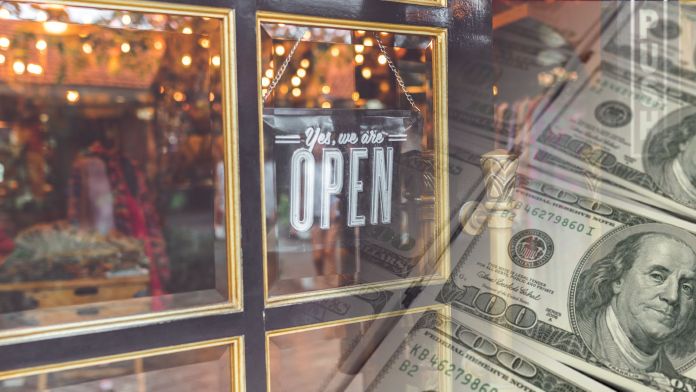Article originally appeared here.
A minimum-wage law is, in reality, a law that makes it illegal for an employer to hire a person with limited skills. Milton Friedman
Minimum wage equates to minimum skills. At least that was drilled into my head as a 16-year-old in 1987. My first job in high school was working at a retail store for minimum wage at $3.35.
Fast forward a few years later in college, I’d continue to work for minimum wage (or slightly above). The goal, graduate and get a “real job.” I secured employment soon after graduating working for a bank making $20K per year/$400 per week/$10 per hour as a loan rep.
Now minimum wage is expected to be raised to $15 in most places in a few short years. According to a bipartisan study conducted by the Congressional Budget Office, this move would cost 1.4 million jobs yet lift 900,000 people out of poverty. It’s a chicken-egg situation with no easy answers causing hyper-partisan strife.
Negative effects for small businesses
According to a study put out by JP Morgan Chase, small businesses account for nearly 99 percent of America’s 28.7 million firms. Nearly 88 percent in this group have fewer than 20 employees. Mom-and-pop restaurants and retail establishments comprise a good portion of these businesses.
The National Restaurant Association estimates that nearly 17 percent of America’s 1 million restaurants have been forced to shut down due to Covid-19. Pre-pandemic, the average profit margin for restaurants hovered around 3-5 percent with labor (20-30 percent) and food (28-35 percent) being their biggest expenses. During the pandemic, expenses increased dramatically. This is due to the need for enhanced cleaning supplies, retrofitting restaurant layouts, and the reliance on third-party food apps.
In conjunction with incurring monumental expenses, restaurants are facing an average of 36 percent reduction in revenue due to social distancing mandates. These small businesses, which make up the backbone of America, will either be forced to lay off staff or raise prices. Purdue University put out a study that the $15 minimum wage would raise prices to nearly 5 percent. This comes at a time when many Americans are struggling.
What a minimum wage hike could do to the workers affected
According to 2020 Labor Force Statistics, the majority of people working at prevailing Federal minimum wage fall between 16-24 years. The concept of providing a living wage tugs at the heartstrings, especially as America continues to deal with the pandemic and rising inequalities.
Not all economists agree with the benefits of raising the minimum wage. David Neumark a Professor of Economics at the University of California completed a report that overwhelmingly indicates that the young and less educated sectors will suffer dramatically.
In reality, this is a complex issue that goes well beyond “bumper-sticker” slogans that drive fear and anger. One only needs to dig beneath feel-good policies and study the economics involved.
How AI can bridge the gap

In the book Competing In The Age Of AI, authors Marco Iansiti and Karim Lakhani state, “Every organization should get to work now to digitize and structure its processes, systems, and capabilities to accelerate operational scale, scope, and learning. There is no longer any rationale for waiting. It doesn’t matter if your organization is new or old. Ultimately if the virus doesn’t get you, your competitors will.“
Labor costs are rising. Now, with the democratization of AI, small businesses can now invest in tools that can help mitigate a more than doubling of a mandatory minimum wage. It’s been said that the pandemic has accelerated the rate of technological adoption. Projects that were slated for 3-4 years down the road are being implemented now.
Examples of how AI is helping streamline efficiencies are plentiful. These include:
- AI-powered checkout: customers visit their favorite brick-and-mortar store, grab items and go without having to wait in line or scan purchases at checkout
- AI-driven digital menus: customer visits their neighborhood restaurant, scans QR code, completes order when being prompted with “Amazon-like” food and drink recommendations without the need for wait staff interaction
- AI-robot cooks: automated fry cook that can work faster, more accurate than a human
While AI can help automate processes and procedures, it will still need some level of personal intervention. A retail establishment that currently employs 10 cashiers may need to let go 40 percent of its workforce. The others will need to be retrained in other areas to make the store run efficiently. The ability for an employee to cross-train and learn other skills is vitality important.
The costs of these platforms vary. But not one of them comes close to the expense of a fully trained, salaried minimum wage employee at $15 per hour.
Next steps for both small businesses and workers affected
Capitalism is a force for good. It enables job growth. If nothing else, this pandemic is giving rise to innovation, particularly in the field of AI.
No doubt the minimum wage increase is going to cause suffering. However, both sides can benefit:
- Small businesses: Consider adoption of AI-driven technologies
- Workers: Look into free online coding courses
Good or bad, change is inevitable. It’s been proven that AI tools can drive revenue and improve efficiencies with minimal human capital. Coding jobs are plentiful and well-paying as digital transformation explodes.
Winston Churchill states, “Never let a good crisis go to waste.” Covid has given us the wonderful opportunity to improve and better ourselves both on a professional and personal basis. It’s up to you, the individual, to take charge of your destiny and get after it.

